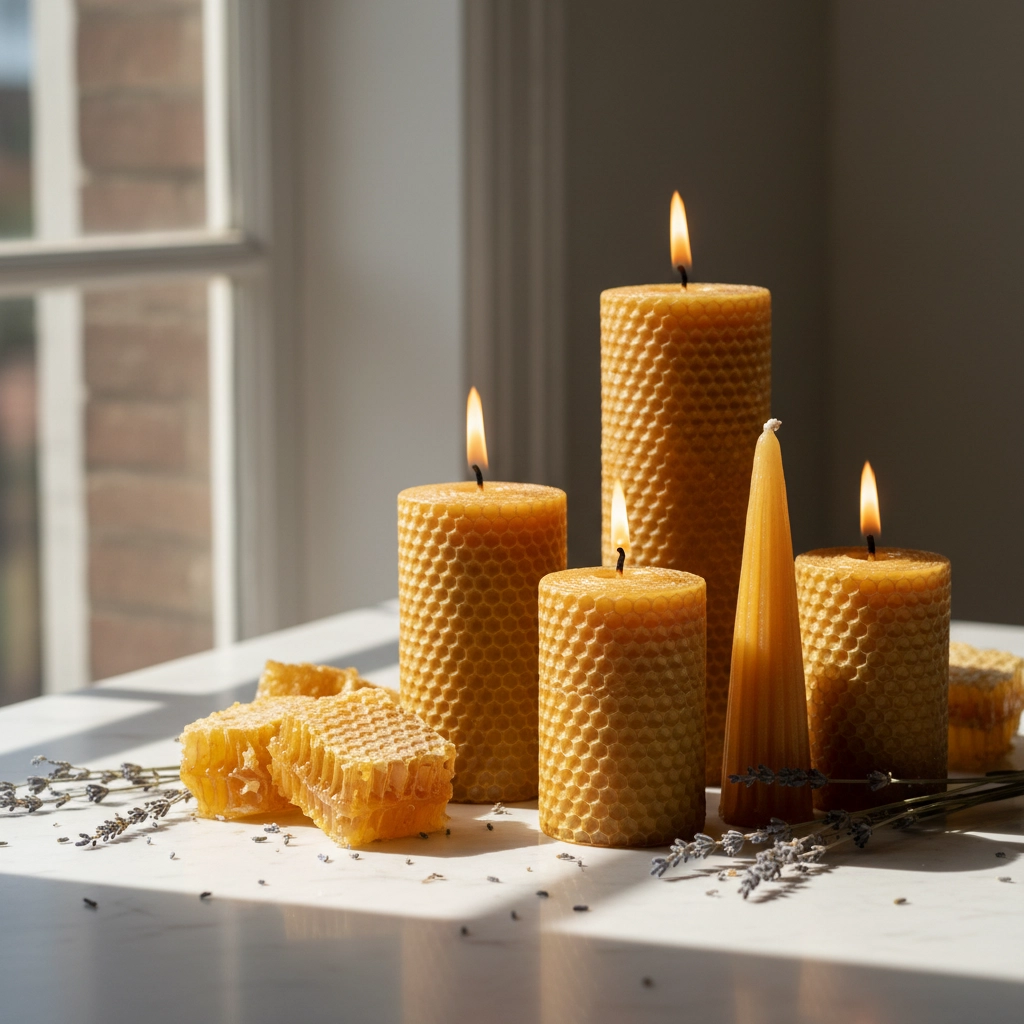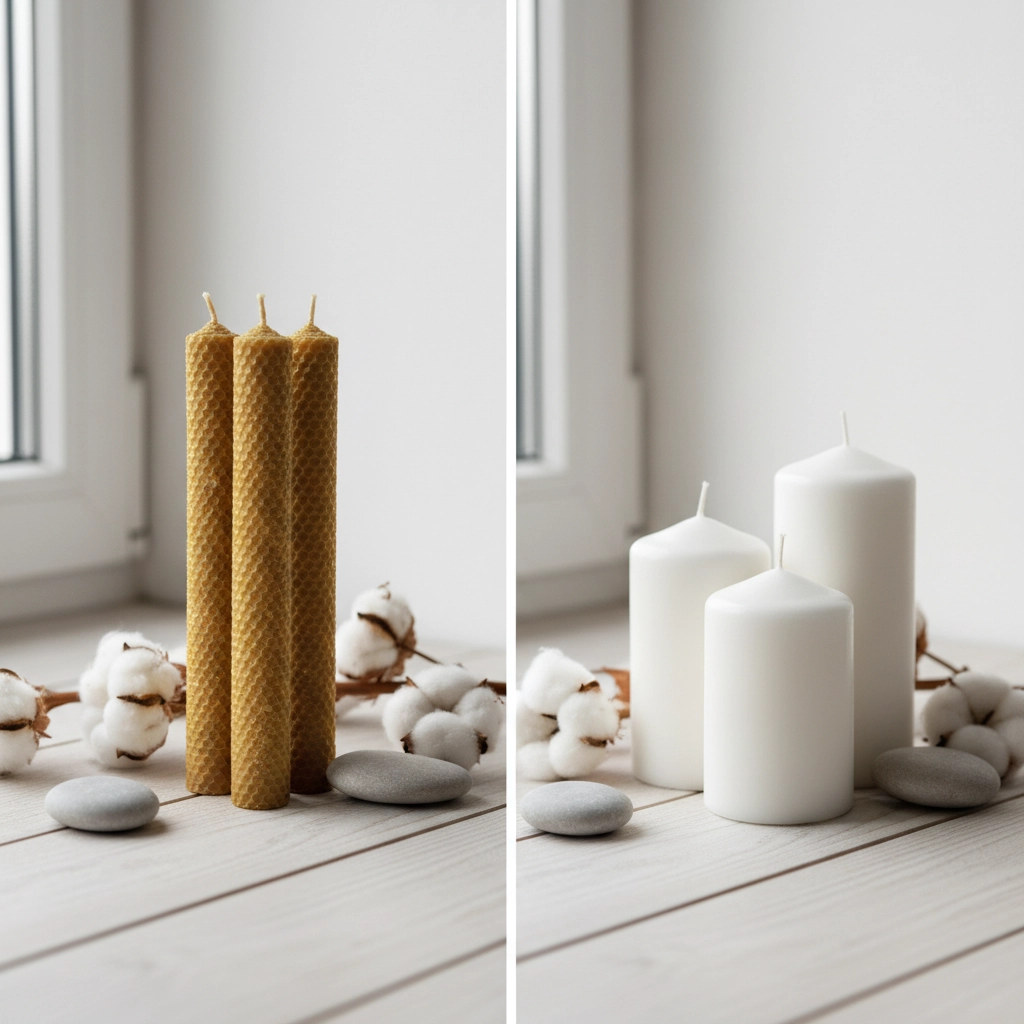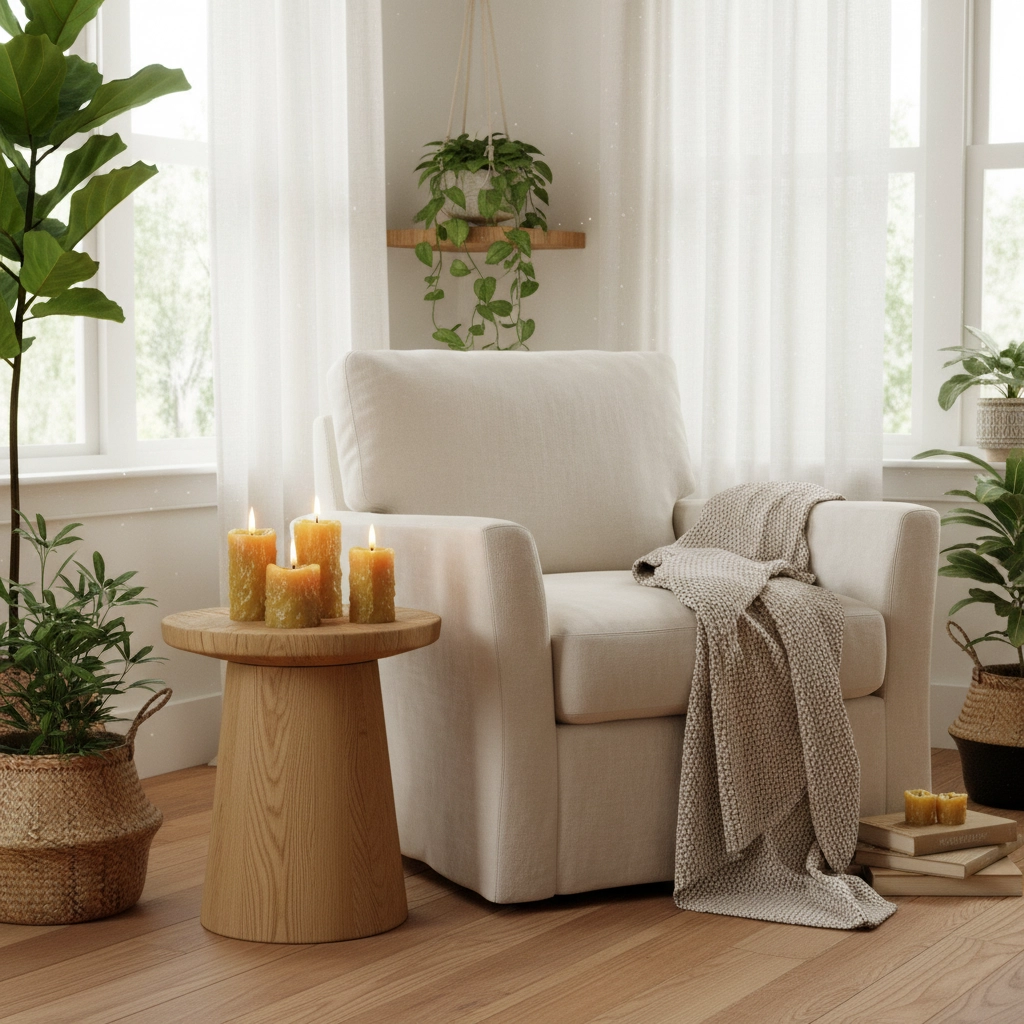Beeswax Candle Benefits Vs Paraffin: Which Is Better For Your Home?
When you're standing in the candle aisle trying to choose between different types of candles, you might feel overwhelmed by all the options. Should you go with the affordable paraffin candles that seem to dominate the shelves, or invest in those pricier beeswax ones that promise natural benefits? It's a common dilemma that many candle lovers face, and honestly, the choice can make a bigger difference in your home than you might think.
Well, in this article you'll get the answer to which type of candle truly deserves a spot in your living space. We'll break down everything from burn time and air quality to cost-effectiveness and health impacts, so you can make an informed decision that's right for your home and budget.
What Makes Beeswax Candles Special?
Beeswax candles are nature's gift to candle lovers. These golden beauties are created by honeybees as part of their natural honeycomb-building process, making them one of the most sustainable candle options available. When you light a beeswax candle, you're essentially burning a completely natural product that hasn't been heavily processed or loaded with synthetic chemicals.

The most impressive thing about beeswax candles is how they actually improve your indoor air quality while they burn. Unlike other candles that might pollute your air, beeswax releases negative ions that work like tiny air purifiers. These ions grab onto dust, pollen, and other airborne particles, helping to clean the air in your room naturally. If you suffer from allergies or just want cleaner air in your home, this feature alone makes beeswax worth considering.
You'll also notice that beeswax candles burn with an exceptionally bright, warm light. The flame is steady and brilliant, creating a cozy atmosphere that's perfect for relaxing evenings or romantic dinners. Plus, they naturally smell wonderful – that subtle honey scent comes through without any artificial fragrances needed.
The Performance Advantages of Beeswax
When it comes to getting your money's worth, beeswax candles are impressive performers. They have one of the highest melting points among all candle waxes, which means they burn much slower and last significantly longer than most alternatives. A quality beeswax candle can burn for hours longer than a paraffin candle of the same size.
This slower burn rate isn't just about duration – it also means less dripping and mess. Beeswax candles hold their shape beautifully as they burn, so you won't find yourself constantly cleaning up wax drips from your furniture or candle holders.
Another major advantage is the clean burn. You won't see that annoying black soot building up on your walls or lamp shades that you might notice with other types of candles. This keeps your home looking cleaner and means less maintenance for you.
Understanding Paraffin Candles
Paraffin candles are what you'll find in most stores, and there's a reason they're so popular – they're incredibly affordable and come in virtually every scent and color imaginable. Paraffin wax is derived from petroleum as a byproduct of oil refining, which allows manufacturers to produce these candles cheaply and in massive quantities.

If you love having different seasonal scents or enjoy switching up your home fragrance regularly, paraffin candles give you endless options. From vanilla and lavender to complex designer fragrances, the variety available is truly impressive. You can easily match candles to your mood, season, or home decor without breaking the bank.
The immediate affordability of paraffin candles makes them tempting for casual candle users or anyone on a tight budget. You can pick up several candles for the price of one beeswax alternative, which seems like a great deal upfront.
The Hidden Costs of Paraffin
While paraffin candles might save you money initially, they come with some significant drawbacks that you should consider. The biggest concern is what happens when you actually burn them. Paraffin releases various chemicals into your home's air, including toluene and benzene – substances that aren't exactly what you want to be breathing in your living space.
You've probably noticed that black, sooty residue that appears on walls and surfaces near where you burn paraffin candles. This isn't just an aesthetic issue – it's evidence of incomplete combustion and the release of carbon particles into your air. Over time, this soot can stain your walls, furniture, and decor, leading to more cleaning and potentially even repainting.
Paraffin candles also burn much faster than beeswax alternatives. That affordable candle might need to be replaced two or three times more often than a beeswax version, which starts to add up in both cost and environmental impact.
Health and Environmental Considerations
When you're choosing candles for your home, you're not just picking a light source or fragrance – you're making a decision that affects the air quality in your living space. This is where the differences between beeswax and paraffin become really important.

Beeswax is completely non-toxic and produces no harmful emissions when burned properly. In fact, as mentioned earlier, it actively helps purify your air. This makes beeswax candles an excellent choice if you have family members with respiratory issues, allergies, or chemical sensitivities. Some people even report that burning beeswax candles helps reduce their allergy symptoms.
From an environmental perspective, beeswax is renewable and sustainable. Supporting bee populations through beeswax purchases can indirectly help with pollination and ecosystem health. The production process requires minimal processing, and beeswax is completely biodegradable.
Paraffin, on the other hand, is a petroleum product that contributes to our dependence on fossil fuels. The chemicals released during burning can potentially irritate sensitive individuals and may not be ideal for homes with children, elderly family members, or pets who might be more susceptible to air quality issues.
The Real Cost Comparison
Let's talk numbers because this is where many people get surprised. Yes, beeswax candles cost more upfront – sometimes two to three times as much as paraffin alternatives. But when you look at the total cost of ownership, the picture changes significantly.
A typical beeswax candle burns for 50-75% longer than a comparable paraffin candle. This means you're actually getting more hours of candlelight per dollar spent. When you factor in the longer burn time, the cost difference becomes much smaller, and in some cases, beeswax actually becomes the more economical choice over time.
There's also the hidden cost savings to consider. Because beeswax candles don't produce soot, you'll spend less time cleaning and potentially save money on repainting or deep cleaning services. Your home will stay cleaner longer, which has real value even if it's hard to quantify exactly.
Making the Right Choice for Your Home
So which type of candle should you choose? The answer really depends on your specific priorities and situation.
Choose beeswax candles if you prioritize air quality and want the health benefits of cleaner burning candles. They're ideal if you burn candles regularly and want the best long-term value. If you have anyone in your household with allergies, asthma, or chemical sensitivities, beeswax is definitely worth the investment. You'll also appreciate them if you prefer subtle, natural scents over artificial fragrances.

Paraffin candles might be right for you if you're on a very tight budget and only burn candles occasionally. They're also good if you love experimenting with different scents and colors regularly. For special occasions where you need many candles at once (like dinner parties), paraffin can be a cost-effective choice.
However, if you're someone who burns candles frequently – perhaps daily for relaxation or ambiance – the health and economic benefits of beeswax make it a smarter long-term investment. You'll get better air quality, longer burn times, and a cleaner home environment.
Consider starting with one or two high-quality beeswax candles for your main living areas where you spend the most time, and you can supplement with paraffin options for less frequently used spaces if budget is a concern.
The bottom line is that while paraffin candles might seem like a bargain, beeswax offers superior value when you consider burn time, air quality, and overall home environment. For most people who regularly use candles in their homes, investing in beeswax candles is a decision they won't regret – your lungs, your walls, and your wallet will thank you in the long run.
